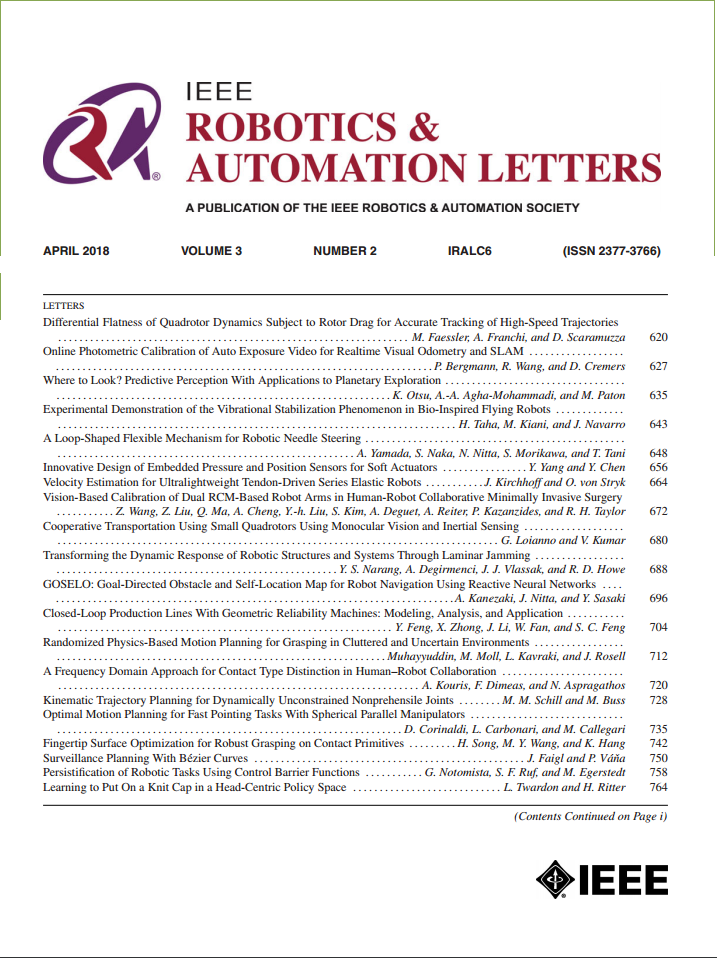无预先碰撞测试的先发制人冲击缓解优化
IF 5.3
2区 计算机科学
Q2 ROBOTICS
引用次数: 0
摘要
在高速和动态机动以及执行高精度任务期间,有效的冲击缓解策略对于防止机器人系统及其操作环境的潜在损害至关重要。在实际应用中成功实施影响缓解战略从根本上需要适当的参数调整。然而,由于碰撞的破坏性,启发式参数调整是不切实际的,因为它有可能在实验试验中破坏机器人系统及其操作环境。本研究通过引入一种新颖的方法,消除了在参数优化中进行初步碰撞实验的需要,该方法利用了最近基于接近传感器的先发制人的冲击缓解策略,将冲击缓解重新定义为几何问题而不是物理问题。这项工作的关键创新在于对接近传感器输出的重新表述,从而既可以解析推导先发制人的运动轨迹,又可以直接应用标准优化求解器。通过数值模拟和两种不同的实验配置验证了该方法的有效性。通过消除碰撞试验的需要,机器人系统可以安全地执行潜在的破坏性任务,否则如果没有适当的冲击缓解,将导致系统损坏。本文章由计算机程序翻译,如有差异,请以英文原文为准。
Optimization of Preemptive Impact Mitigation Without Prior Collision Testing
Effective impact mitigation strategies are crucial for preventing potential damage to both robotic systems and their operational environments during high-velocity and dynamic maneuvers, as well as during the execution of high-precision tasks. The successful implementation of impact mitigation strategies in real-world applications fundamentally requires appropriate parameter tuning. However, owing to the destructive nature of collisions, heuristic parameter tuning is impractical, as it risks damage to both the robotic system and its operational environment during experimental trials. This study eliminates the need for preliminary collision experiments in parameter optimization by introducing a novel methodology that leverages recent proximity sensor-based preemptive impact mitigation strategies that reframe impact mitigation as a geometric rather than physical problem. The key innovation of this work lies in the reformulation of the proximity sensor output to enable both the analytical derivation of preemptive motion trajectories and the direct application of standard optimization solvers. The effectiveness of the proposed methodology is validated through numerical simulations and two different experimental configurations. By eliminating the need for collision trials, robotic systems can safely execute potentially destructive tasks that would otherwise result in system damage without proper impact mitigation.
求助全文
通过发布文献求助,成功后即可免费获取论文全文。
去求助
来源期刊

IEEE Robotics and Automation Letters
Computer Science-Computer Science Applications
CiteScore
9.60
自引率
15.40%
发文量
1428
期刊介绍:
The scope of this journal is to publish peer-reviewed articles that provide a timely and concise account of innovative research ideas and application results, reporting significant theoretical findings and application case studies in areas of robotics and automation.
 求助内容:
求助内容: 应助结果提醒方式:
应助结果提醒方式:


